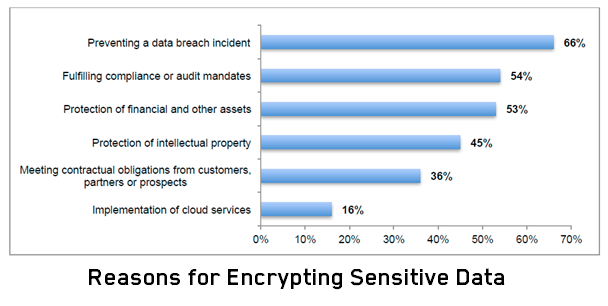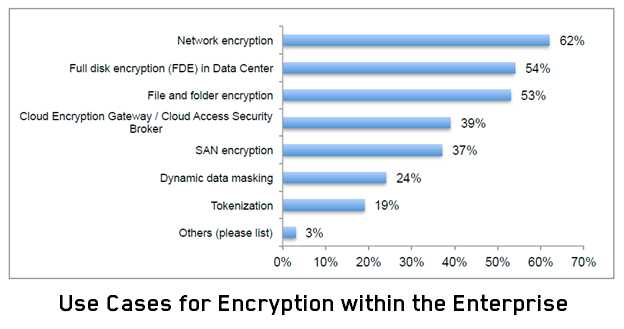 Ski helmets, seat belts, and encryption. What comes to your mind when you read these words?
Ski helmets, seat belts, and encryption. What comes to your mind when you read these words?
You may immediately think “safety,” and you’d be right, but how about “speed enablers”? At first blush, that may not be the first concept that comes to mind, but there’s a pretty compelling case to be made for this as another common theme.
Let me give you a couple fun examples, starting with ski helmets. During the winter of 2002/2003 researchers studied different factors, and how they affect skier and snow boarder speed. One of the variables examined was “use or not of helmet”. The authors measured the speed of 650 individuals at three different US ski resorts and found the average speed for helmet users (28.4 MPH) was significantly higher than those not using a helmet (25.4 MPH).
ClickToTweet: Of Ski Helmets, Seat Belts and Encryption http://bit.ly/1ImEN9e pic.twitter.com/kV0w3SSrGw
In my blog-writing research, I found seat belts even more interesting. While the first seat belts were installed by automobile manufacturers in the 1950s, seat belt use remained very low until the 1980s. From 1984 through 1987, seat belt use increased from 14 percent to 42 percent. This increase was the direct result of the passage of seat belt laws in 31 states. In fact, the safety improvement that resulted from increased seat belt use was so substantial that it played a significant role in Congress’ decision to raise the national speed limit from 55 MPH to 65 MPH in 1987 and 1988.
So what does all this have to do with encryption? While encryption is clearly a security measure, it’s also an enabler of speed. When your data’s secure, you can more quickly and confidently take advantage of new services because you’re not hampered or unnerved by risk.
A recent survey has offered some interesting results that pertain directly to the adoption and uses of encryption in corporate America. The survey, entitled Encryption as an Enterprise Strategy, was published by IANS, the leading provider of in-depth security insights and decision support delivered through research, community, and consulting. The paper was written by Dave Shackleford, an IANS faculty member and SANS analyst. It is definitely worth a read to see what your peers are thinking and to gain insight from Dave’s analysis. The survey focused on the concept of protecting data that is meant to be internal to an organization, that is, not to be divulged publicly. I’ll give you a quick glimpse into the results.
100 IT decision makers were surveyed. When they were asked to cite their reasons for encrypting data, here were the responses:
 I find it very interesting that in every data security survey that I have seen in 2015, “Preventing data breaches,” or similar answers, have consistently been more commonly cited as a driver than compliance. This is a very striking contrast to a few years ago, when respondents would typically say in effect “I have to encrypt because the auditor says so.” As a consumer, it gives me hope that business leaders are starting to think seriously about protecting the personal data that they are entrusted with.
I find it very interesting that in every data security survey that I have seen in 2015, “Preventing data breaches,” or similar answers, have consistently been more commonly cited as a driver than compliance. This is a very striking contrast to a few years ago, when respondents would typically say in effect “I have to encrypt because the auditor says so.” As a consumer, it gives me hope that business leaders are starting to think seriously about protecting the personal data that they are entrusted with.
The survey also looked at specific encryption approaches. Respondents are implementing a wide variety of encryption technologies to solve a lot of tough challenges and address many different use cases:
 The big response for network encryption makes sense. We all use SSL and IPsec. But why is FDE usage in the data center is so high? I hope that the security teams aren’t making that decision, because, silly rabbit, FDE is for laptops, not data centers! (Let me know if you’re under 40 and you get the Trix reference). You can find a good analysis of this topic in a recent paper by Aberdeen analyst Derek Brink. Also, see my previous blog: Don’t let your storage team be your company’s Justin Bieber.
The big response for network encryption makes sense. We all use SSL and IPsec. But why is FDE usage in the data center is so high? I hope that the security teams aren’t making that decision, because, silly rabbit, FDE is for laptops, not data centers! (Let me know if you’re under 40 and you get the Trix reference). You can find a good analysis of this topic in a recent paper by Aberdeen analyst Derek Brink. Also, see my previous blog: Don’t let your storage team be your company’s Justin Bieber.
Whether you’re in the camp that sees FDE in the data center as valuable or not, there is definitely a lot of data being encrypted, and for a lot of good reasons. When IANS asked “has your organization considered encrypting everything,” the answer was a resounding “yes”. Eighty-four percent of respondents indicated that they had considered implementing a security strategy of encrypting all sensitive data. Dave dug into this concept in this report and found “encrypt all data” implied that all “sensitive” data would be encrypted.
Discovering and encrypting all sensitive data is a strategy for ensuring protection of these assets, whether they’re found within the data center or in cloud environments. But Dave goes on to discuss the rub, describing how discovering “all” sensitive data is very expensive, time consuming, and a largely imperfect effort. Therefore, establishing a default policy of encrypting all data that is meant for “internal use” can significantly and immediately reduce risk and accelerate deployments.
IANS finds that despite the challenges (real or perceived) with encrypting everything, the idea nonetheless remains compelling, as this type of security approach could significantly reduce the risk of sensitive data theft and exposure. In fact, IANS is seeing a definitive shift toward encryption as a strategic activity versus a tactical one, with many employing widespread and far-reaching encryption policies across the entire organization.
"Could encrypting everything result in a more simplified strategy for security technology, saving costs and improving security posture now and in the future? The idea is compelling, and the majority of security leaders we questioned felt that this could be a good idea. Currently, IANS recommends that organizations look at encryption more strategically, potentially exploring an ‘encrypt everything’ approach now or in the near future."
Encrypting everything makes a lot of sense if you want your business to go faster. If you want to accelerate your use of the cloud, you can save a lot of time by encrypting the data first, instead of getting into an analysis-paralysis struggle in figuring out which data to encrypt. Want to move faster into big data analytics, but have concerns about sensitive data mixing in the data lake? Encrypt or tokenize those columns of data before it is allowed to enter the big data environment. Worried about outsourcing your data to an analytics firm? Have them encrypt the analytic nodes and all the reports, while you hold the cryptographic keys. In these cases and many others, the reality is that you can move faster with encryption.
Future Vormetric blogs will be exploring the “encrypt everything” strategy further, examining different use cases, approaches, and trade-offs. But for now, I’ll ask, could you imagine not wearing your seat belt when taking a drive in your car? While drivers in the 1970s may not have considered wearing a seatbelt, today buckling in is second nature. Would you allow your children to start skiing or snowboarding without wearing a helmet? A few years ago, I started wearing a helmet when skiing to set a good example for my kids. Now I can’t imagine skiing without one. I believe the same thing is happening with data. It won’t be long before IT professionals wouldn’t consider leaving internal data unencrypted any more than they would consider driving home without wearing a seat belt.
I’m going to end this blog with one more crazy observation. Most of the states that were aggressive in passing seat belt laws in the mid-80s, including California, New Jersey, New York, and Texas, are the same states that were aggressive in passing security breach notification laws in the mid 2000s. Many of the states that didn’t pass seat belt legislation until the 90’s, including Alabama, Alaska, Massachusetts, Mississippi, South Dakota, and West Virginia, were equally behind the curve on creating breach notification laws. The take away? Use your safety equipment wisely to reduce risk and move faster. You don’t have to wait for your lawyers to insist on it.

 Charles Goldberg | VP, product marketing
Charles Goldberg | VP, product marketing